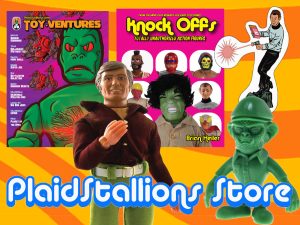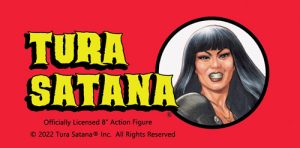Cool Consumers Distributing Catalog Auction
I noticed this auction today for one of the final Consumers distributing Catalogs, I believe they died in 97 or 98 however. Another cool ass store killed by Wal-Mart’s arrival in Canada.
Anyway, the seller of the Catalog added some stuff from Wikipedia and even mentions my beloved Shoprite in his piece about why Consumers failed. Great stuff, see below:
Consumer’s Distributing was a catalogue store in Canada that operated from 1957 to 1996. At its peak, it operated 217 stores. The first Consumer’s Distributing store was opened in 1957 by Jack Stupp in Toronto. Consumer’s Distributing aimed to reduce costs for customers by storing goods in an inexpensive warehouse, instead of displaying them in a costly showroom. Customers made their selections from a catalogue, filled out a slip with product identification, and waited for staff to retrieve the items from the warehouse. The company was taken public in 1969, but later sold to Provigo, a Quebec-based grocery retailer. Hudson’s Bay Company, which operates Canadian department stores under the Bay and Zellers names, opened the “Shop-Rite” catalogue chain in competition. It was closed in 1982. Consumers sought bankruptcy protection in 1996 after an aggressive expansion strategy failed to make the company sustainable. Sales had dropped from $1.8 billion in 1988 to $580 million in 1995. Consumers Distributing was plagued by products being frequently out of stock, and by new warehouse format stores that allowed customers to retrieve products themselves. A similar format store in the United States, Service Merchandise, had also failed at nearly the same time. Consumers Distributing was plagued more by the perception of things “always being out of stock” due to the catalogue shopping nature of the store. In a store like Wal-mart, customers seeking a particular product go to the store to shop. With the catalogue concept, the customer selects the item either at home while looking through the company’s catalogue, or by a group of catalogues in the front of every store. Once the customer picks out the merchandise that he or she wants, the customer then goes to the counter where the clerk then goes to retrieve it off the warehouse shelves. It was not uncommon for a customer to wait on line only to be told by a clerk that the merchandise was not in stock. Consumers did not have a computerized inventory until the late 1980s, which meant that the company was not able to track what merchandise was in the stores or what merchandise was wanted by customers. When a product is out of stock, or unavailable from the manufacturer, this creates an “out of stock” problem for a catalogue store, which it does not create for a store who displays their in-stock items. When a customer goes to Wal-mart, they see that they have 10 different products in stock. At Consumers, the customer chose one item, which may not have been in stock. They did not see that there were 15 other similar items that are in stock. Consumers initiated several initiatives to dispel this “out of stock” perception including “super stores” that had all of the available, in-stock products on display; and free home delivery or store to store transfer for items that were not in stock. They also implemented a state-of-the-art inventory system that could check the availability of other stores in real time, and also would suggest alternate products at the store which were in stock. Conseumers was one of the first to initiate this “real time” stock check and prepayment of products available at other branches and the main warehouse. Unfortunately, these initiatives, including the superstore expansion, costly free delivery, and costly new inventory management software overextended the company, and due to this and tightening competition with the introduction of large American retail chains, the company overextended itself.











Yeah, I used to go there all the time. Another problem they had was that say you wanted a certain Transformer. There might be 6 different ones in the catalog, with different numbers, but when you put the number of the particular one you wanted they would often just bring out any Transformer from that shipment. You may already have had that one or not wanted it and you would have to get the clerk to go back in and find the correct one for you. They wouldn’t just bring the box out of the back for you to pick, they would just keep bringing out random ones until you were happy or you left because they didn’t seem to have the Transformer you wanted.. There was alway a line up of people who wanted you to take your Transformer and just leave. They also did the same thing with Go-bots. Not sure if they were like that with toasters and such but they had little interval catalogs which would come out with updates at the stores. They were always out of a lot of stuff though. They even had jewelry cases there.. Man, I loved filling out those little sheets and waiting for the clerk to come back and not knowing if you were going to get that Transformer you wanted or not…
Great blog!
I wanted to comment on Consumer's Distributing. They weren't killed by Wal-Mart. They had major, major issues before Wal-Mart came on the scene in Canada.
I worked for Kodak Canada from 1989 to 1998, and Kodak was a big vendor for Consumer's Distributing. I heard some interesting stuff there. CD played hardball with their vendors. I heard some dirty stories about some of their business practices.
Anyway, they started to run into tough financial troubles before Wal-Mart was hardly a blip on the radar screen. They took longer and longer to pay. Their business practices caught up with them, and their vendors — sick of their garbage and already owed way too much — simply stopped sending them product. This wasn't easy to do. CD was big for Kodak, for instance. But in the end they figured they weren't going to get paid anyway, so no use throwing good money after bad. Down they went.
I have to say that I always preferred Shop-Rite, even though it died much sooner. They were owned by The Bay at the end, and (like The Bay when it first opened in Oshawa) Shop-Rite actually sold Avalon Hill wargames. That was cool!
Heh, I was at the grand opening of the Oshawa Bay store, very happy memory.